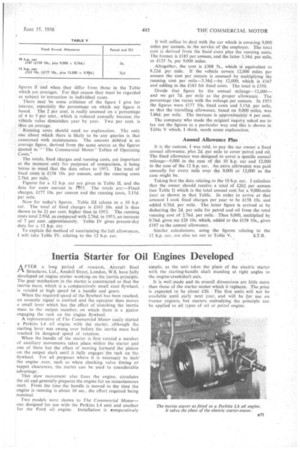Inertia Starter for Oil Engines Developed A FTER a long period
Page 65

If you've noticed an error in this article please click here to report it so we can fix it.
of research, Aircraft Steel Structures, Ltd., Ansdell Street, London, W.8, have fully developed an engine starter working on the inertia principle. The gear mechanism in the starter is constructed so that the inertia mass, which is a comparatively small steel flywheel, is rotated at high speed by a handle and gears.
When the required speed of the flywheel has been reached, an acoustic signal is emitted and the operator then moves a small lever which has the effect of clutching the inertia mass to the output member, on which there is a pinion engaging the rack on the engine flywheel. .
A representative of The Commercial Motor easily started a Perkins L4 oil engine with the starter, although the starting lever was swung over before the inertia mass had reached its designed speed of rotation.
When the handle of the starter is first rotated a number of auxiliary movements takes place within the starter and one of these has the effect of moving forward the pinion on the output shaft until it fully engages the rack on thz. flywheel. For all purposes where it is necessary to inch' the engine over, such as when checking valve timing or tappet clearances, the starter can he used to considerable advantage.
This slow movement also frees the engine, circulates the oil and generally prepares the engine for an instantaneous start. From the time the handle is moved to the time the engine is running is about 10 sec., the effort required being nominal.
Two models were shown to The Commercial Motor— one designed for use with the Perkins L4 unit and another for the Ford oil engine. Installation is somparativaly
simple, as the unit takes the place of the electric starter with the starting-handle shaft standing at right angles to the engine-crankshaft axis.
It is well made and its overall dimensions are little more than those of the starter motor which it replaces. The price is expected to be about £50. The first units will not be available until early next year, and will be for use on tractor engines, but starters embodying the principle can be applied to all types of oil or petrol engine.




































































































